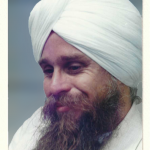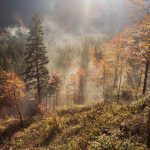Education
David J. Schleich, PhD
Naturopathic medicine is a profession that is busy crafting and holding space in an expensive, eschewing healthcare landscape where orthodox allopathic medicine holds the key cards. It is also an idea, though, quite unlike biomedicine, rooted as it is, epistemologically, in biology; rather, naturopathic medicine pays attention to the non-material elements in health outcomes, understanding the need for the mind and the spirit to have as much shelf space in protocols and therapies as in chemical pathways and symptoms. Lately, biomedicine has adopted “Mind-Body,” not only into its parlance but also into its billable hours, despite having been its detractor in living memory. Such is the arrogance of a controlling clan.
There is no credible rival to naturopathic medicine (in terms of comprehensive care and life-long well-being). It is one of this continent’s best answers to the horrific challenges of chronicity and healthcare services cost. If it were just a matter of muscling through the biomedicine-controlled turnstiles of Medicare, these days would be cause for cheer, given the tangible, steady progress on so many fronts: more and more states with a regulatory framework for naturopathic medicine, improved regulatory frameworks, accredited education and professional preparation programs, and, above all, growing public interest and trust in things natural. Alas, the truth is, as usual, happy and unhappy at the same time.
A More Level, Less Level Playing Field
Overall, the playing field for acceptance of naturopathic medicine, especially its educational preparation standards and performance in North America, is becoming more level and less level at the same time. As Roszak put it, back in 1969, in his classic, The Making of a Counterculture, the dominant market players assimilate what is usable from what is new. Except that naturopathic medicine is not new. In a milieu where assimilation accelerates, even for naturopathic doctors for whom the chances for a successful clinical startup are increasingly stressful in a context of “integrative” and “functional” and “holistic” allopathic medicine, the payoffs feel not so very different from a regular salaried gig at the local multi-discipline MD’s clinic or in a regional system with dollops of the natural in the brand.
In living memory there are many developments which tip to optimism about the growth of naturopathic medicine. Even though there are events that worry us, such as the recent derogatory polemic of a former ND (which had, for a while, wide circulation on the web), or the decision by MUIH and SCUHS to not start new ND programs before the end of the decade. Even so, the launch in recent history of organizations focused on integration and a more patient-centered approach to care – such as the Academy of Integrative Health & Medicine (AIHM) just a few years ago, or the American College for the Advancement of Medicine (ACAM) a few decades ago – bodes well for inter-professional respect. The data show that the overall trend for our medicine is growth. Since 1978 the number of programs and students has grown, despite the current (likely) half-decade slump in the matriculation pool. Persistence and graduation rates are strong and holding. Loan default rates are minimal in the ND field among graduates.
Persisting Enigmas in Mainstream Medicine
Mainstream biomedicine leaders know that their epistemology and reductionist gestalts have limitations that are not cryptic; in fact, they were foretold by pioneering naturopaths a century back, who were as befuddled then as modern naturopathic physicians are today by the enigmatic political and media responses to, say, iatrogenic disease, or the latest pharmaceutical damage (eg, massive cost to the nation’s treasury and to the family budget; or opioid over-prescribing, to name just 2). Notwithstanding conflicting projections and the ambiguities of allopathic detraction concerning the scientific validity and clinical effectiveness of naturopathic medicine, we are systematically forming a profession which should have had better legs by now (the better to stand up with, the better to run with), but whose muscles are stronger by the year and whose agility is improving.
Accompanying this confusing tension are the vicissitudes and steep, unforgiving learning curves associated with accessing the bounty of key mainstream organizations such as the National Institutes of Health (NIH), Medicaid, Medicare, the Match, and other health-funding systems. The NIH is fair game for us to flex our new muscles, particularly since its funding is increasingly available to the worthy and the organized. If we are to persist, research and publishing constitute an essential leg of professional formation.
Meanwhile, there are intermittent and remarkable flares which call attention to one of the many roots of the problem of interrupted and repressed access to naturopathic medicine; that is, the discriminatory lack of insurance coverage for CAM/Integrative Therapies. As a case in point, Mathew Bauer (President of the Acupuncture Now Foundation) took note of this wretched disparity and took the time to check out the CDC’s opioid investigation, as a case in point, and discovered just how little there was. (Weeks, 2016)
Central to the whole cascade of factors affecting the future of naturopathic medicine is education. Where strong schools emerge and thrive, the profession grows. The data tell us that this has been the case and continues to be so. Where branding of naturopathic medicine is consistent and generated by excellent spokespersons, the profession grows. Where the accreditation track record is stable and reliable, the profession grows.
A central question in our time is: where is the growth likely to happen? After Flexner, in the first 2 decades of the last century, the medicine took up refuge in the Pacific Northwest and persisted. Back in the heartland of America and in the Northeast, things fizzled. Only Connecticut hung on after the hopeful days of the early 1920s.
Going Back to Where It All Started
Even though the literature shows that Naturopathy began with Lust and others in New York and migrated to the Midwest with other champions, historically the largest concentrations of licensed naturopathic doctors have been along the North American west coast, curling like a backward “J” over into Arizona and Utah. Significantly, strong schools have existed in these latitudes and longitudes for decades: NCNM, John Bastyr College, and Southwest College. By 1978 OCNM had begun back in eastern Canada, and the growth of the profession in southern Ontario was stimulated. This has not occurred in French-speaking Quebec. There emerged, though, a program at Bridgeport University in Connecticut in the late 1990s, again with incubational results. The number of naturopathic doctors in the Northeast began to stabilize and grow, such that by the beginning of the second decade of the new century, a shift east in terms of potential and enduring growth rates was palpable. At Boucher Institute, out on the Canadian west coast in Vancouver, another program began also in the late 90s which has added to the growth in the Canadian West. The accumulation of new programming, then, grew the number of naturopathic doctors, stimulated accompanying legislative efforts, grew public awareness, and incubated energy for growth elsewhere.
Today, though, there is another concentration of naturopathic doctors emerging in the heartland and in the Northeast that is exciting, promising, and inevitable. The aggregate population of the region is in excess of 37 million people. The Great Lakes (H.O.M.E.S.: Huron, Ontario, Michigan, Erie, and Superior) touch Ontario, Minnesota, Wisconsin, Michigan, Illinois, Indiana, Ohio, Pennsylvania, and New York. This area of North America contains 20% of the world’s fresh water supply and is the continent’s most powerful economic engine. At the same time, the Great Lakes Basin is one of the planet’s most environmentally sensitive zones. The presence of over 2000 NDs in the Great Lakes area is exciting and signals a shift. What has long been a north-south axis, is now becoming an east-west one. There are more naturopathic doctors, more naturopathic students, more clinics, and more demand for naturopathic medicine in the Great Lakes Basin than ever.
In any case, critical to the professional formation of naturopathic medicine in North America is a collaborative, coordinated approach which has to include the 3 key legs of professional formation: social closure for the profession (licensing), accredited schools housing accredited programs (preparation for entry to practice that is housed in post-secondary and post-graduate education), and research (codifying the content of the profession’s knowledge and practice) (Figure 1). When these dimensions of professional formation are strong – and are accompanied by strategic attention paid to preparatory and continuing medical education, naturopathic services public education, regulatory lobby efforts, enhanced licensing, registration, certification, and scope expansion efforts – the numbers of NDs rise arithmetically and will not abate, despite the best efforts of biomedicine to stall and stop all competitors.
Figure 1. The 3 Pillars of Professional Formation

The actual largest concentration of licensed NDs in the world is in Ontario, Canada, although the American Southwest is growing rapidly as well, in sheer numbers. Longer term, however, the Great Lakes heartland and the Northeast will overtake those West Coast and Southwest numbers. Oregon and Washington are growing too, but at rates slower than has been the case since the early 1970s.
There are strong ND programs in the Great Lakes (NUHS, CCNM) and in the Northeast (UB). We need to generate 2 more schools quickly – one in New York or Pennsylvania, and one in Maryland or North Carolina to consolidate this trend and benefit from the strong growth in population and economic strength.
Factored into this equation, too, are recent successes in licensing in Pennsylvania, with Massachusetts, Maryland and Rhode Island nearby. Note, though, that there are recent successes in Minnesota, North Dakota, and Colorado too. Add in continuing modifications and enhancements to that legislation (eg, California, Oregon, Washington, Utah) and there is little doubt that, overall, the profession continues to form, and not recede. Consumers find licensed naturopathic doctors practicing in professional clinical teams at medical centers all over the place these days. Twenty-eight prominent health systems, hospitals, and cancer treatment centers employ 1 or more licensed naturopathic doctors. These trends are strong and will persist because the fundamentals are already in place.
References:
Weeks, J. AMA, Other Leading Medical Organizations Urge Insurance for Non-Pharma/Integrative Pain Care. December 17, 2016. Huffington Post Web site. http://www.huffingtonpost.com/john-weeks/ama-other-leading-medical_b_13696232.html. Accessed August 30, 2018.
Roszak, T. (1969). The Making of a Counter Culture: Reflections on the Technocratic Society and Its Youthful Opposition. Garden City, NY: Doubleday & Company, Inc.
Photo by Ben White on Unsplash
 David J. Schleich, PhD, is president and CEO of the National University of Natural Medicine (NUNM), former president of Truestar Health, and former CEO and president of CCNM, where he served from 1996 to 2003. Previous posts have included appointments as vice president academic of Niagara College, and administrative and teaching positions at St. Lawrence College, Swinburne University (Australia) and the University of Alberta. His academic credentials have been earned from the University of Western Ontario (BA), the University of Alberta (MA), Queen’s University (BEd), and the University of Toronto (PhD).
David J. Schleich, PhD, is president and CEO of the National University of Natural Medicine (NUNM), former president of Truestar Health, and former CEO and president of CCNM, where he served from 1996 to 2003. Previous posts have included appointments as vice president academic of Niagara College, and administrative and teaching positions at St. Lawrence College, Swinburne University (Australia) and the University of Alberta. His academic credentials have been earned from the University of Western Ontario (BA), the University of Alberta (MA), Queen’s University (BEd), and the University of Toronto (PhD).





